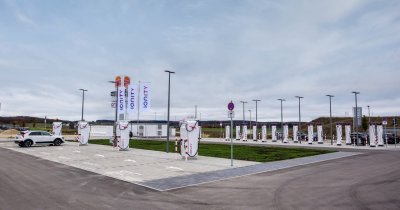Once entered into force, the regulation will be the first step towards introducing a comprehensive carbon removal and soil emission reduction framework in EU legislation and contribute to the EU’s ambitious goal of reaching climate neutrality by 2050, as set out in the European climate law.
The recently-reached deal is provisional, pending formal adoption by both institutions.
The regulation will include an open definition of carbon removals, in line with the UN Intergovernmental Panel on Climate Change (IPCC) and which only covers atmospheric or biogenic carbon removals. It will cover the following carbon removal and emission reduction activities and differentiate between four corresponding types of units:
- permanent carbon removal (storing atmospheric or biogenic carbon for several centuries)
- temporary carbon storage in long-lasting products (such as wood-based construction products) of a duration of at least 35 years and that can be monitored on-site during the entire monitoring period
- temporary carbon storage from carbon farming (e. g. restoring forests and soil, wetland management, seagrass meadows)
- soil emission reduction (from carbon farming) which includes carbon and nitrous oxide reductions from soil management, and which activity must overall reduce the carbon emissions of soils or increase carbon removals in biological matter (Examples of activities are wetland management, no tilling and cover crop practices, reduced use of fertilizer combined with soil management practices, etc.)
Compared to the Commission’s proposal, this means an extension of the scope of the regulation to soil emission reductions. Temporary carbon storage from carbon farming and soil emission reduction activities must last at least five years to be certified and must not lead to land being acquired for speculative purposes negatively affecting rural communities.
By 2026, the Commission is tasked with producing a report on the feasibility of certifying activities that result in the reduction of emissions other than those related to soils (carbon and nitrous oxide). The report will be based on a pilot certification methodology for activities that reduce agricultural emissions from enteric fermentation and manure management.
Activities that do not result in carbon removals or soil emission reductions, such as avoided deforestation or renewable energy projects, are not included in the scope of the regulation. The co-legislators also agreed to exclude enhanced hydrocarbon recovery from the permanent carbon removal activities and to explicitly clarify that activities and operators in the marine environments are included in the scope of the regulation.
The new rules will apply to activities taking place in the EU. However, when reviewing the regulation, the Commission should consider the possibility of allowing geological carbon storage in neighboring third countries, provided that those countries align with EU environmental and safety standards.
The provisional agreement maintains the Commission proposal’s requirement that carbon removal activities need to meet four overarching criteria in order to be certified: quantification, additionality, long-term storage and sustainability.
Based on these criteria, the Commission, assisted by an expert group, will develop tailored certification methodologies for different types of carbon removal activities, with a view to ensuring the correct, harmonized and cost-effective implementation of the carbon removal criteria. The co‑legislators have made some changes to define more precisely on the basis of which criteria the methodologies must be developed and included a list of indications as to which activities should be prioritized.
The co-legislators agreed to maintain the key elements of the certification process and the voluntary nature of certification, but included further clarification as to how the certification process works.
On sustainability for carbon farming, the co-legislators have added indications on how the sustainability objectives must be understood and have included that a carbon farming activity must always generate at least a biodiversity co-benefit (including soil health and avoidance of land degradation).
For carbon farming activities, the provisional agreement gives member states the possibility to provide advice to farmers on the application procedure and allows for synergies between the Common Agricultural Policy’s identification system for agricultural parcels (LPIS) and the information generated by the certification process under this framework.
Carbon net benefits will generate units corresponding to one metric ton CO2 equivalent of certified net benefit generated by one of the carbon removal or soil emission reduction activities.
The co-legislators have further agreed to include that the certified units can only be used for the EU’s climate objectives and nationally determined contribution (NDC) and must not contribute to third countries’ NDCs and international compliance schemes. These rules, including on the corresponding adjustments, will be reviewed in 2026.
The provisional agreement will now be submitted for endorsement to the member states’ representatives in the Council (Coreper) and to the Parliament’s environment committee. If approved, the text will then need to be formally adopted by both institutions, following revision by lawyer-linguists, before it can be published in the EU’s Official Journal and enter into force.
 Mihai - Cristian Ioniță
Mihai - Cristian Ioniță












Any thoughts?